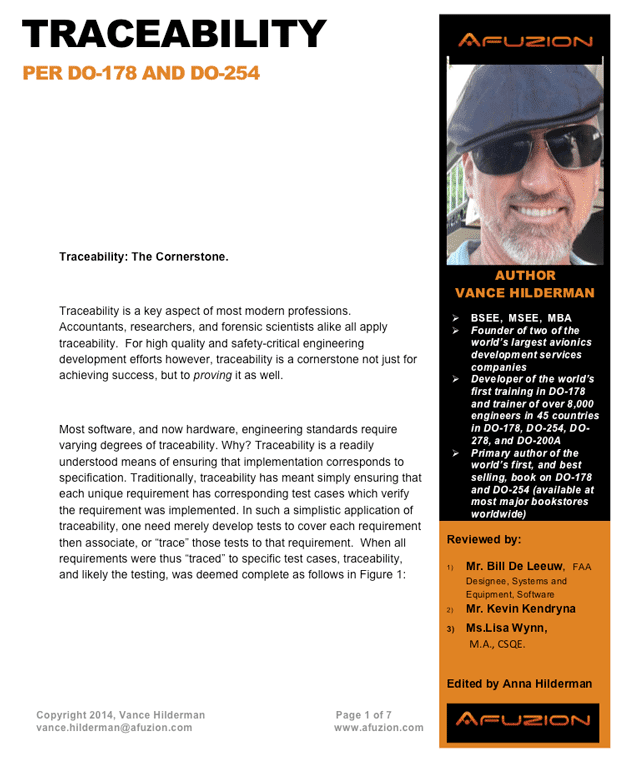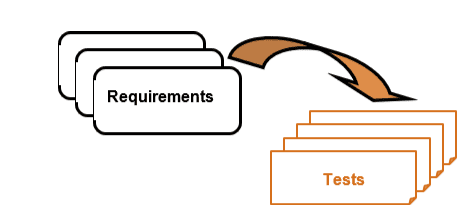
DO-178 & DO-254 Traceability
Read Excerpt Below, or Click Here To Download Full 10-20 Page Paper
Basic DO-178C traceability and DO-254 traceability starts with the overly simplistic view as follows:

Simplistic Traceability – The Beginning
The aforementioned simplistic approach to traceability indeed has merit, and it is a first step in the right direction. But is it complete? Hardly! Does it satisfy DO-178C or DO-254, arguably the world’s most stringent standards as required for avionics systems? Absolutely not! What are the shortcomings with this simplified approach to DO-178C and DO-254 (and DO-278A!) traceability?
1. There is no traceability to the implementation components; necessary during the review of such components
2. There is no traceability between increasing levels of requirement granularity; necessary to prove the requirements decomposition process
3. There is no traceability to design data; necessary for review of such
4. There is no ability to isolate extraneous implementation components, such as unused code
To remedy these shortcomings, DO-178C and DO-254 require traceability which is more detailed, more complete, and which traces not only forwards but backwards as well. And, DO-178C/DO-254 requires more complete traceability throughout a complete set of artifact components including:
1. System Requirements
2. High Level and Low Level Software or Hardware Requirements
3. Implementation (Code or VHDL )
4. Tests
5. With the above captured in the Configuration Index (CI)
This more complete traceability, applicable to just software, is depicted in the figure below, excerpted from AFuzion’s DO-178C training and DO-254 Training:

Modern Traceability – The Result of Evolution
Seen another way, DO-178C and DO-254 traceability (along with DO-278A traceability) are depicted below:

To download the remaining 7 pages of this technical Aviation DO-178C and DO-254 Traceability whitepaper, please download below:
Free: Download Remaining 10+ Page Paper Here



